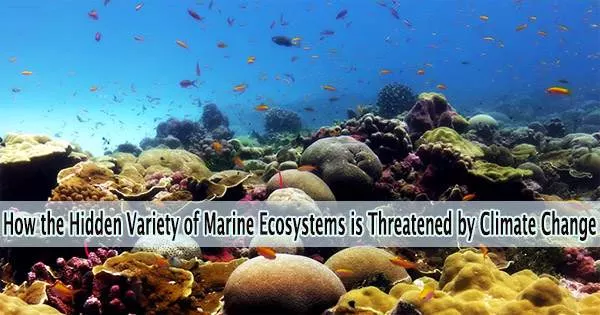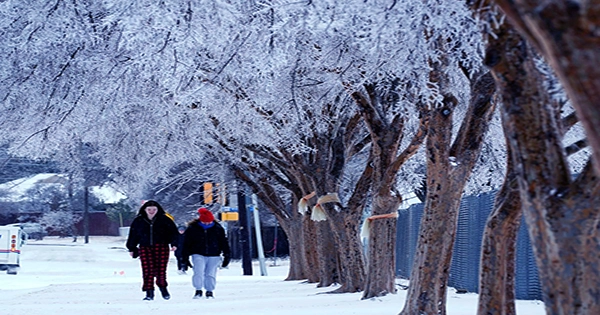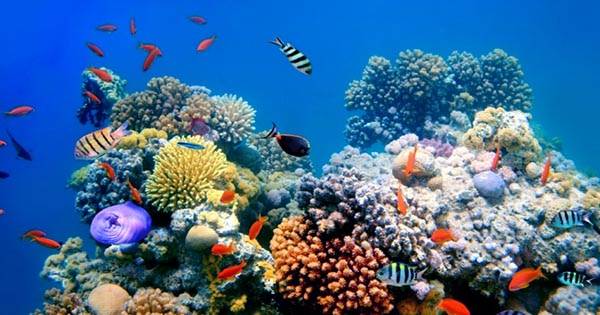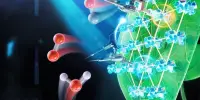Climate change is causing marine heat waves, which are already common, to become more intense. Extreme warm water episodes are now a serious hazard to ocean life and have brought about some of the worst effects of climate change.
The most at risk are coral reefs, which are home to 25% of all marine species. Given the enormous number of people whose subsistence and livelihoods depend on coral reefs, this is a terrible scenario.
The reason why different corals differ in their sensitivity to warm seas is a crucial question as climate change pushes corals beyond their limitations.
In our new study in Science Advances, we examined the genetics of hundreds of individual corals during the 2015–16 El Niño-driven heat wave. Our results suggest that heat waves have hidden impacts on the genetic composition of reef-building corals. Understanding this could help scientists bolster reef resilience to future heat waves.
Pushing corals out of their comfort zones
Corals are highly adapted to the temperature of their local waters, with temperatures even 1°C warmer than normal pushing them out of their comfort zone.
The crucial partnership between stony corals, the reef builders, and their symbiotic partners, the microscopic algae that feed the corals, is harmed by unusually warm water. This causes coral bleaching, and in many cases mortality.
The tropical heat wave at our study site in the central Pacific Ocean, Kiritimati (Christmas Island), lasted for ten months, a world record. As a result, there was widespread coral bleaching, which provided an opportunity to learn why some corals perished while others survived.
Cryptic diversity within a widespread coral species
We focused on the widespread lobed coral (Porites lobata). Despite losing about 90% of its coral cover on Kiritimati, this species is among the most heat-tolerant corals, and more than half of its lobed corals survived.
In fact, some Porites colonies didn’t bleach at all.
Why?
Using genomic tools, we identified three distinct types of Porites lobata on Kiritimati. Despite being indistinguishable to the naked eye, these lineages which could be those of separate species are genetically distinct.
Such biodiversity is known as “cryptic diversity” or “hidden diversity.” Although cryptic diversity is widespread across corals, its ecological implications remain unclear.
Marine heat waves threaten cryptic diversity
We found that one genetic lineage of Porites was highly sensitive to the heat wave: only 15% of its colonies survived compared to 50%–60% in the other lineages. Thus, heat waves can have undetected effects, endangering diversity that cannot be seen with the naked eye, even in coral that is often thought to be stress resilient.
Future marine heat waves could eventually wipe out sensitive genotypes like this one, diminishing the genetic diversity of coral reefs if they continue to have comparable impacts.
Losses of genetic diversity could exacerbate an already problematic situation by limiting future adaptability to changing circumstances because interbreeding between cryptic lineages and species can potentially provide a pathway for future adaptation.
A forced breakup
So why did Porites lineages on Kiritimati differ in survival?
One hypothesis is that they house symbiotic partners with different heat sensitivities. We determined which symbionts were associated with particular corals before, during, and after the heat wave using metabarcoding, a method that tries to identify everything discovered living in the coral tissue.
We found that the distinct Porites lineages had different partnerships before the heat wave. Porites species pass on their symbionts from one generation to the next and so these relationships likely arose over many generations.
By the end of the heat wave, however, one of Porites’ unique algal partners had been virtually eliminated. All lineages of survivors shared comparable symbionts, indicating that under high temperatures, the couples’ specialized interactions had vanished.
As a result, not only was a secretive coral lineage left perilously close to local extinction, but also its unique symbiotic relationship had been violently ruptured.
Implications for conserving coral reefs
Due to climate change and other threats, we are currently experiencing a biodiversity crisis. Our findings underscore that this crisis extends beyond what the eye can see.
Numerous cryptic species fill distinct ecological niches and have specialized functions within ecosystems. Understanding these subtle variations can help us better understand how ecosystems work. But worryingly, we may be losing this critical diversity before it is even discovered.
The development of ecosystems that are climate resilient may depend on continued research into cryptic diversity. For instance, using heat-tolerant cryptic lineages in restoration techniques could help reefs become more resilient to future warming.
In the end, a drastic cut in greenhouse gas emissions is required to stop global warming. The present heat waves across the world’s oceans serve as a stark reminder that the ocean is simply getting too hot for corals, and that immediate action is required to prevent further harm. While focused efforts to strengthen coral reefs against climate change may buy some time, this is only a temporary solution.
















